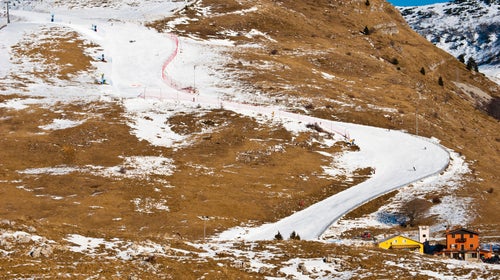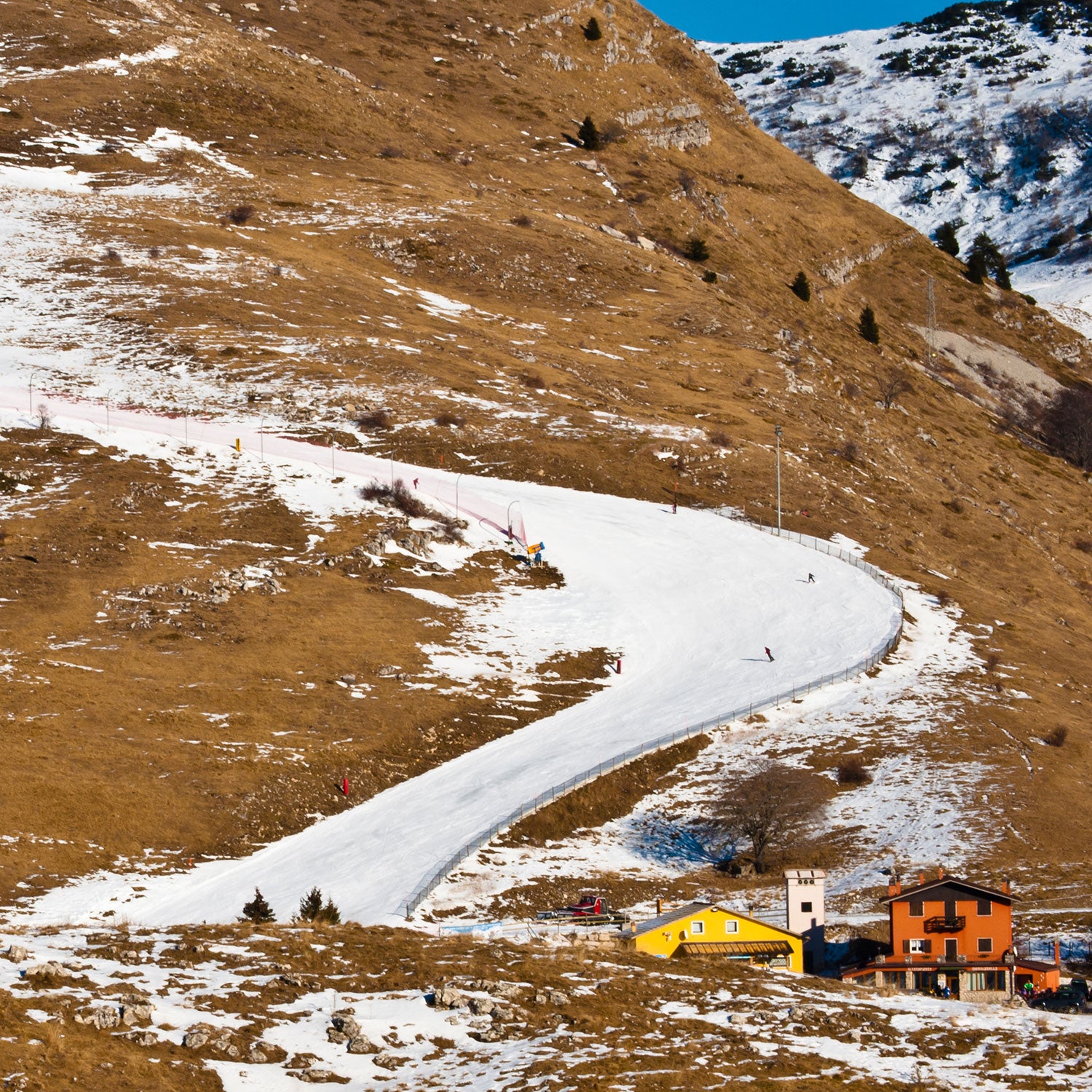I grew up on the water—or, more accurately, in the water. My Irish-Italian family didn’t own a boat, but the North Atlantic was a few hundred yards down the street, and outside of Woody Woodpecker, nothing could keep the neighborhood kids from Rocky Beach. This was in Scituate, Massachusetts—the Irish Riviera, the South Shore—about 26 miles from Boston.
We didn’t have a skiff, but we had a rock that we swam out to. As it emerged from the tide, it looked like an elephant’s back, so Elephant Rock. Whale Rock was farther out from Rocky Beach. The world was how it appeared back then. Somebody in our crew usually had a dive mask, and we’d take turns going to the bottom to snatch green crabs. Later, we fashioned spears out of broomsticks and trident tips from the tackle shop. Surgical tubing, tough to get during the heroin epidemic—the Keith Richards epidemic—added propulsion. Later still, as a college kid returning home, I would cruise the coastline in a wetsuit and snorkeling gear chasing flounder in the sand bars with a slightly improved pole spear. This was the 1970s and ’80s.
Dark, murky, cold, and nothing Jacques Cousteau would bother to film, the undersea world off Rocky Beach before climate change is nevertheless implanted in my mind. So when my son and I returned to visit family and spearfish last summer, I could contrast the coastal ecosystem then and now. Snapshots in time, 40 years apart.
The first thing you notice isn’t visual. That initial dip of the mask is less debilitating. Now we’ll often find balmy water typical of Cape Cod Bay but never the Rocky Beach of old. Scituate fronts the open Atlantic, and eddies of the Labrador Current pool offshore. But this region of ocean is seeing some of the most rapid temperature swings on the planet—roughly eight degrees Fahrenheit at the shoreline since the 1970s.
Lobsters are . As kids, we’d tie truck-tire tubes together and haul wooden traps out 50 yards for a neighbor who had a ten-trap license but no boat. It was highly successful, if stupidly dangerous in hindsight. Traps and ropes kill professional lobstermen on boats. Still, we routinely pulled in keepers, working the shallows that the lobstermen couldn’t safely access. Back then, lobsters thrived in six to 12 feet of water off Massachusetts.
Today, as we snorkeled, I noticed the lobster buoys were farther out. Curious as to why, I later asked a commercial fisherman friend from Gloucester. He surmised that striped bass, which had returned to Massachusetts and Maine in the ensuing decades, were hammering molting lobster in the shadows. He was only partly right. Lobsters are moving to deeper, colder water, part of a larger migration that’s seeing them head offshore and farther north with each passing year. In three days, Jake and I didn’t spot a single lobster in the same rock gardens where I would frequently corner them as late as the early 1990s.
As for the stripers, they were always around Scituate for a few weeks in high summer, but now they’re common most of summer. They too are migrating north from the warm Mid-Atlantic shorelines where they spawn. It’s estimated that striped bass have increased their numbers by 300 percent off eastern Canada, where they’re now . Just past the Rocky Beach shorebreak last summer, Jake and I rolled on our backs at the bottom and watched as wolf-pack-size schools of stripers marauded the shallows above us in a flash of silver bolts.
This is a sign of both ocean health—rapid adaptation—and the challenges species face as habitat changes and newcomers arrive ready to fill vacuums. It’s humans that lag. It’s estimated that climate change and fish migrations will by $10 billion by 2050.
Simply walk up and glance at the ocean like a tourist, though, and it’s easy to believe nothing has changed, which is often the case with recognizing climate change elsewhere in the world. We have to pause and reflect. The time-lapse cameras of our memory—balky as they are—help. I’ve witnessed that firsthand skiing receding glaciers in Europe over the past 15 years. But my inner camera has been documenting changes for far longer. In the late 1980s, just as human-caused climate change was first being registered, I was skiing corn snow in the Colorado Rockies. Today, winter is shorter by two weeks, and the corn cycle, which requires warm days and cold nights for the freeze/thaw to transform the snowpack, is far less dependable. We simply see fewer cold nights in March and April. You can’t tell from a distance if the corn is in; as with the change in the ocean, you have to experience it up close. And once you’re there, it’s obvious that we’re losing winter.
Not that you could possibly miss other harbingers. Increasingly, if you recreate outside, climate change is your face. The pine beetle epidemic has turned western lodgepole pine forests first to rust and then to fallen trunks blocking the trails. Bitter-cold temperatures in deep winter used to kill pine beetles, but they shrug off today’s mild freezes. That gradual warming has resulted in skiers seeing their season shrink by more than a month since the 1970s, fly-fishers experiencing the loss of some trout species in rivers that have become too hot to support them, and boaters experiencing diminished whitewater runs.
And then there are the megafires. As a graduate student in Montana with an environmental journalism bend, I researched the future of fire in the West. This was the late 1990s. At the time, biologists were still hopeful that large-scale fuel reduction (humans selectively cutting trees) could mitigate wildfires after a century of suppression. Today, landscape-scale restoration is a delusion. The West, which is three degrees hotter than it would be without human-caused climate change, will have to burn itself out. on wildfires. Fire ecologists now tell us that if the West warms by another three degrees, forest fires will double in size and frequency. Last summer, more than a million acres burned in Montana alone, and British Columbia saw its biggest fire season in recorded history. Climate change, in this case, is not an esoteric theory discernible only by scientific instruments or the depth of your memory—it’s a crown fire driven by gale-force winds.
That esoteric science, however, is just as scary. When hurricanes strike the coast, or when we see extreme localized rain events—like and cost more than a billion dollars in damages near my Boulder home—our first reaction is to say that hurricanes and floods happened historically, and that’s true. But it’s the intensity of the storms that the burning of fossil fuels has changed. Warmer waters in the gulf and warmer (and therefore wetter) air everywhere fuel such events, and now science is coming close to proving it.
Not that we need to wait for that evidence and our internal cameras to catch up. You simply have to observe nature. Up close, the world, like the waters off my childhood beach, is still as it appears. Warming rapidly, but adaptable and resilient. If only we could move as quickly to limit our assault on it.


